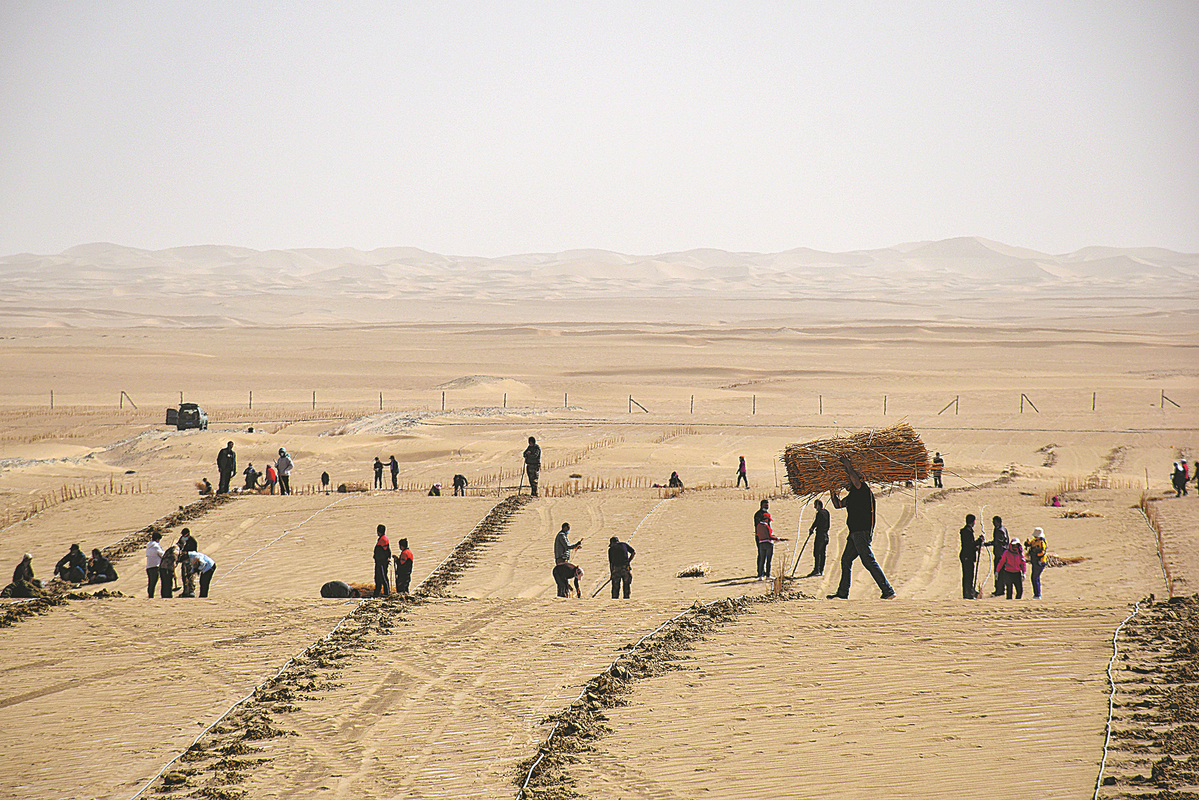Anti-desertification push in Xinjiang shows promise

People build a hay barrier to combat desertification at the Taklimakan Desert in Qiemo county, Xinjiang Uygur autonomous region, in March. GAO HAN/XINHUA
The Xinjiang Uygur autonomous region has restored about 1.89 million hectares of desertified land in the past five years, officials from the Xinjiang Forestry and Grassland Bureau said earlier this month.
Situated in the hinterland of the Eurasian continent, Xinjiang has an arid climate with long hours of sunshine, intense evaporation and little precipitation. It has three deserts-the Taklimakan, Gurbantunggut and Kumtag-and a vast area of sandy land, and its arid climate has led to severe desertification in the region, Xu Hongxing, deputy director of the bureau, said.
He added that effective action is required to combat desertification and protect the fragile environment. Supported by the central government, Xinjiang has been carrying out the Three-North Shelter Forest Project, turning marginal farmland into forests and grassland, conserving water and soil and setting up closed-off protection zones of desertified land in recent years.
"The region has made notable progress in revegetation and desertification reversal," Xu said.
He said that a "forest chief" program, a supervisory system to better evaluate how forestry departments achieve their goals in protecting and expanding forests and grassland, has been rolled out in the region.
"We've been working to enhance the quality, stability and the carbon absorption capacity of forest environments to curb illegal acts that destroy forests and grasslands, and improve the ability to prevent and control fires and biohazards," he said, adding that more than 50 percent of the farmland in sandy areas have adopted water-saving irrigation systems.
Xu also noted that Xinjiang continues taking economic benefits into consideration while managing desertification.
Fruit orchards, medicinal herbs and other economic crops have been widely planted as a part of the afforestation projects. There were more than 90,667 hectares of drought-resistant plants, such as goji berries, roses, liquorice and sea buckthorns, by the end of last year.
Hotan prefecture, located on the southern edge of the Taklimakan Desert, has suffered from wind and sand erosion for generations.
Rose willow, which is wind resistant and good for stabilizing the sand, is one of the species being grown on a large scale in the prefecture to control desertification and promote agriculture.
Strips of it can be used as skewers for cooking mutton and other kinds of meat and also as material for weaving baskets, griddles and other tools. Additionally, it's a host plant for cistanche herba, a type of parasitic flower that has high economic value.
"The cistanche herba is hailed as 'desert ginseng' and known for its tonic properties," said Imin Barat, a farmer who grows the flower, along with rose willow, in Lop county, Hotan.
"Once the tonic herbs are ripe, companies come to purchase the yield. That brings us healthy profits."








